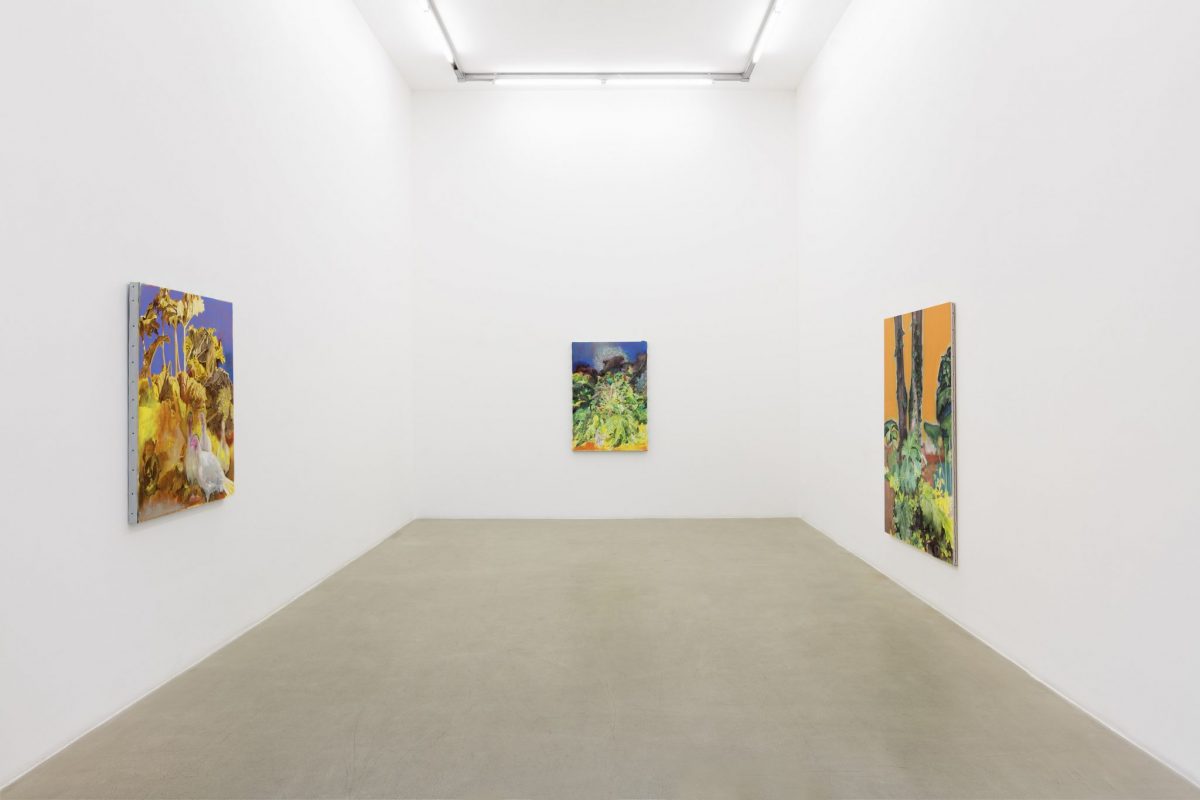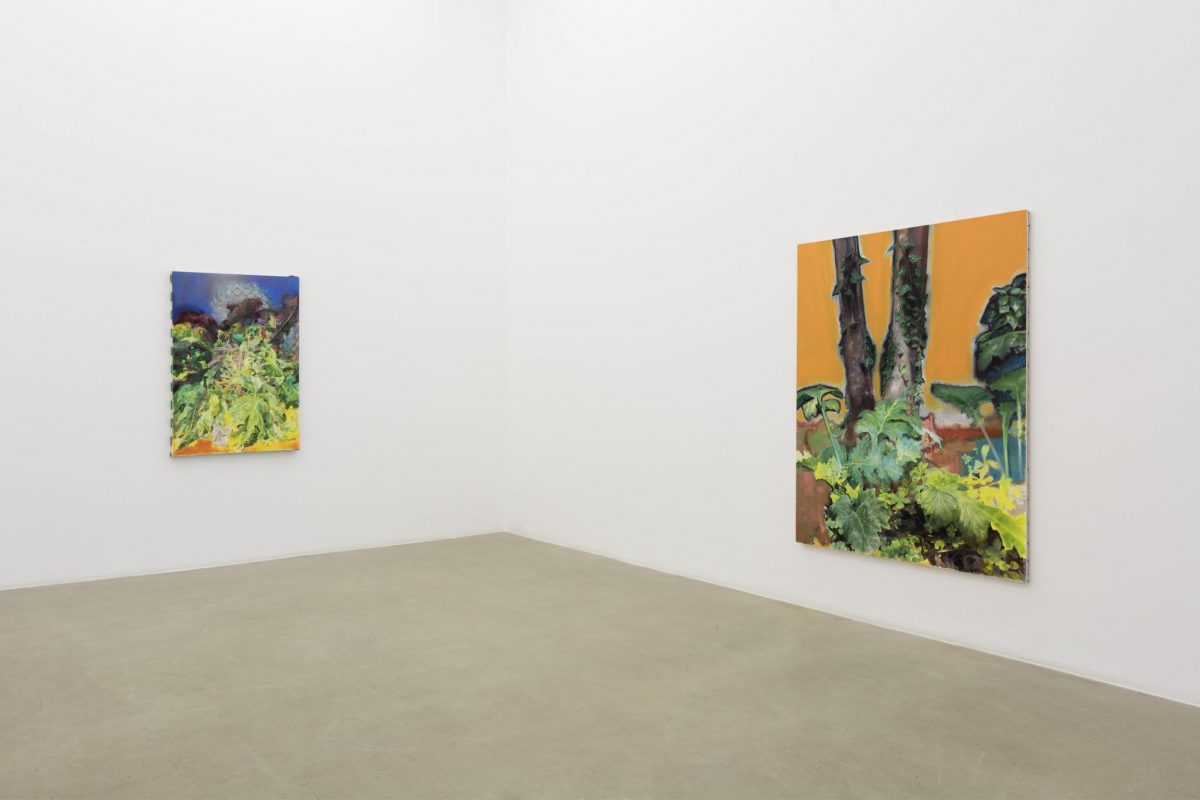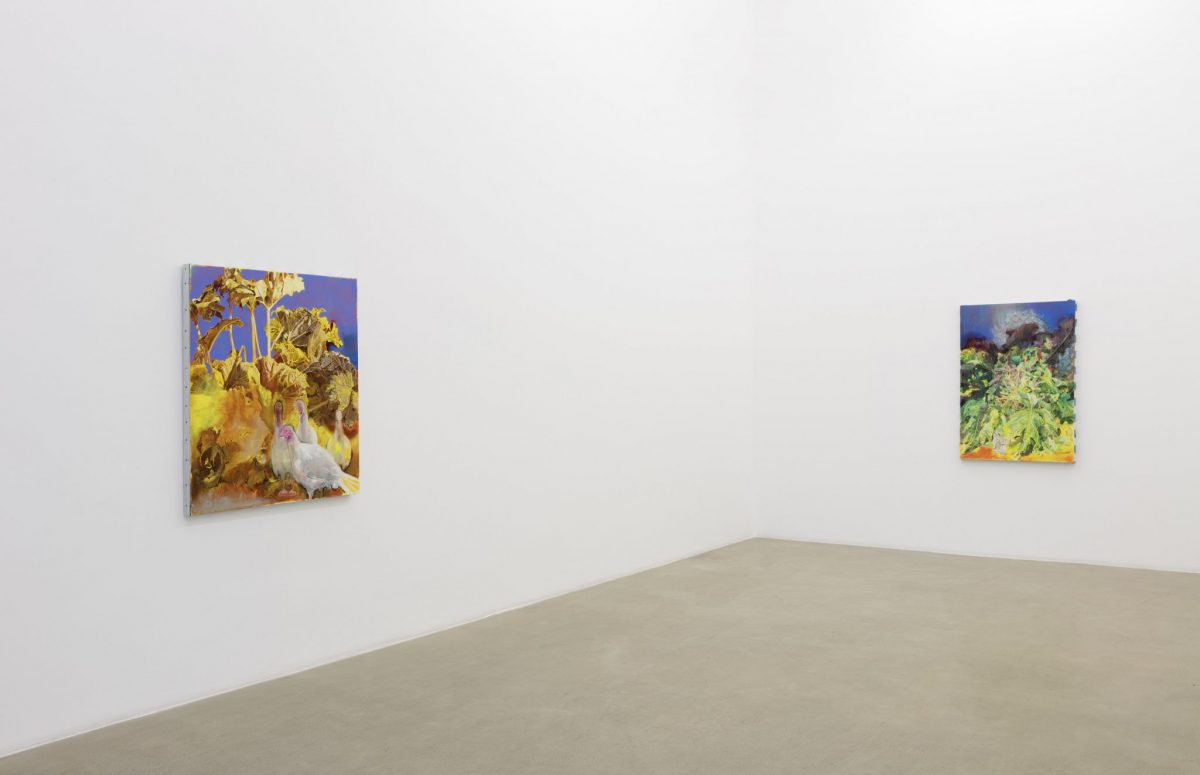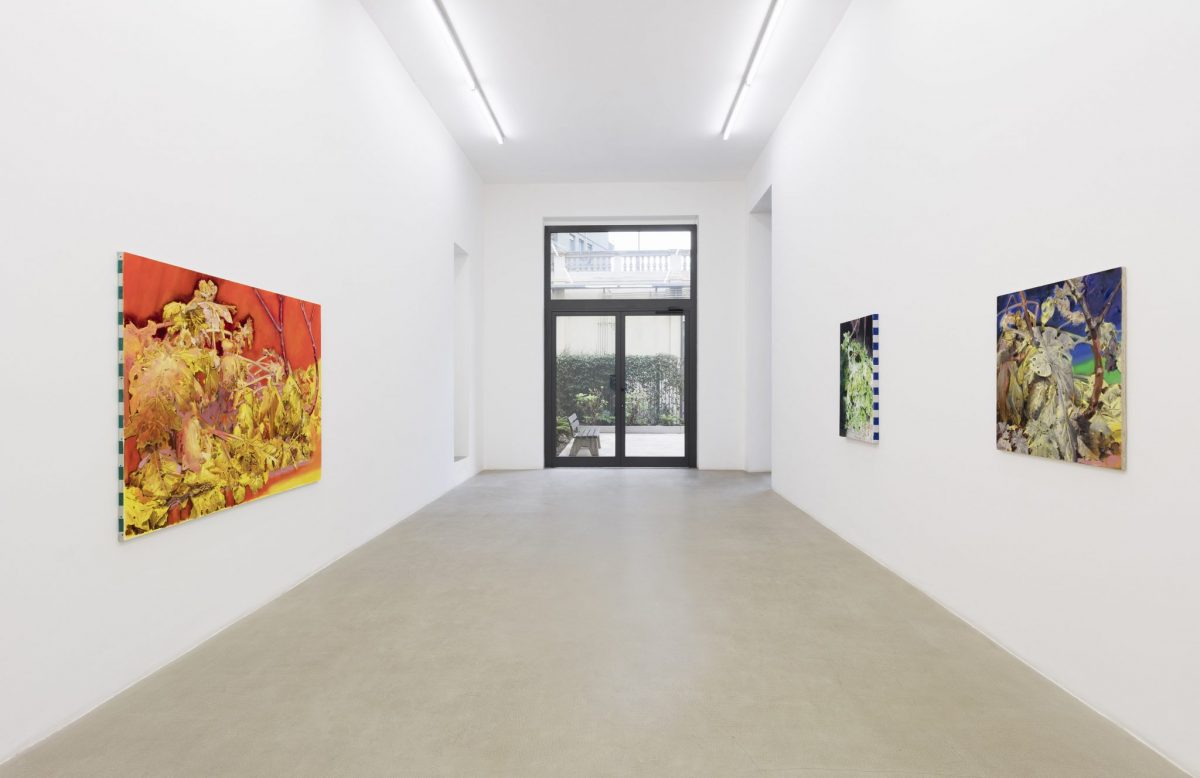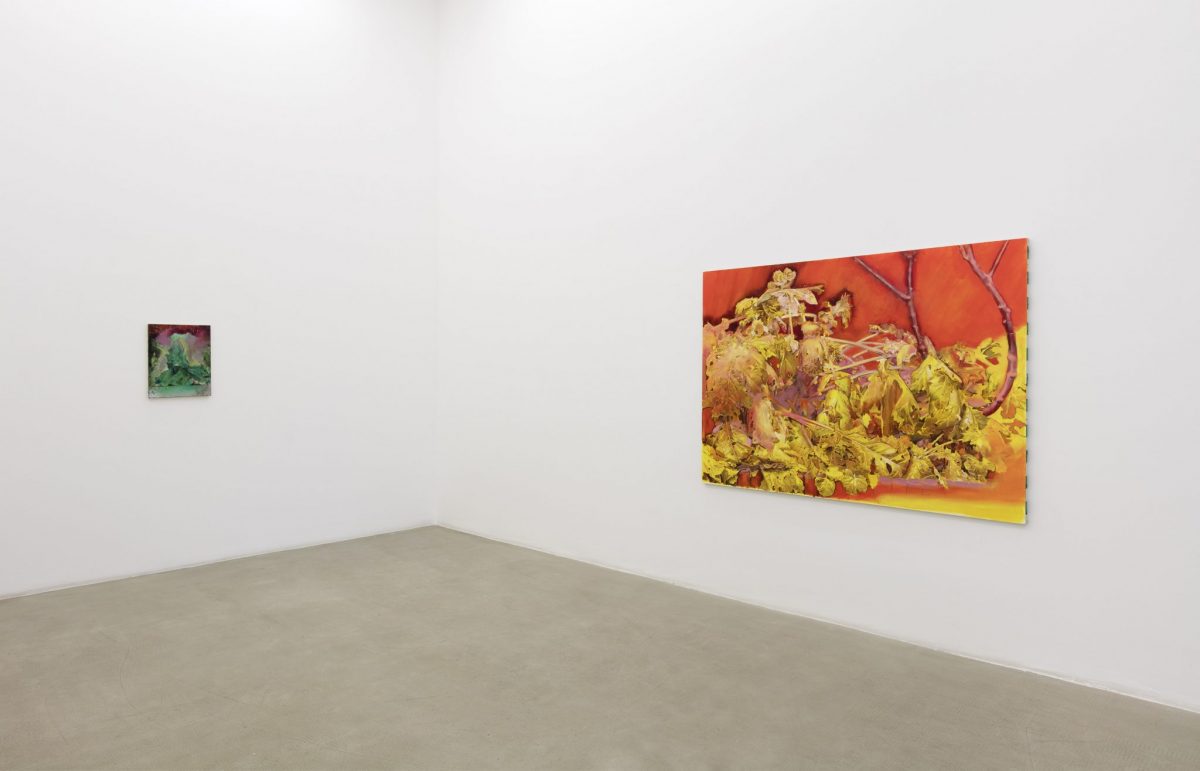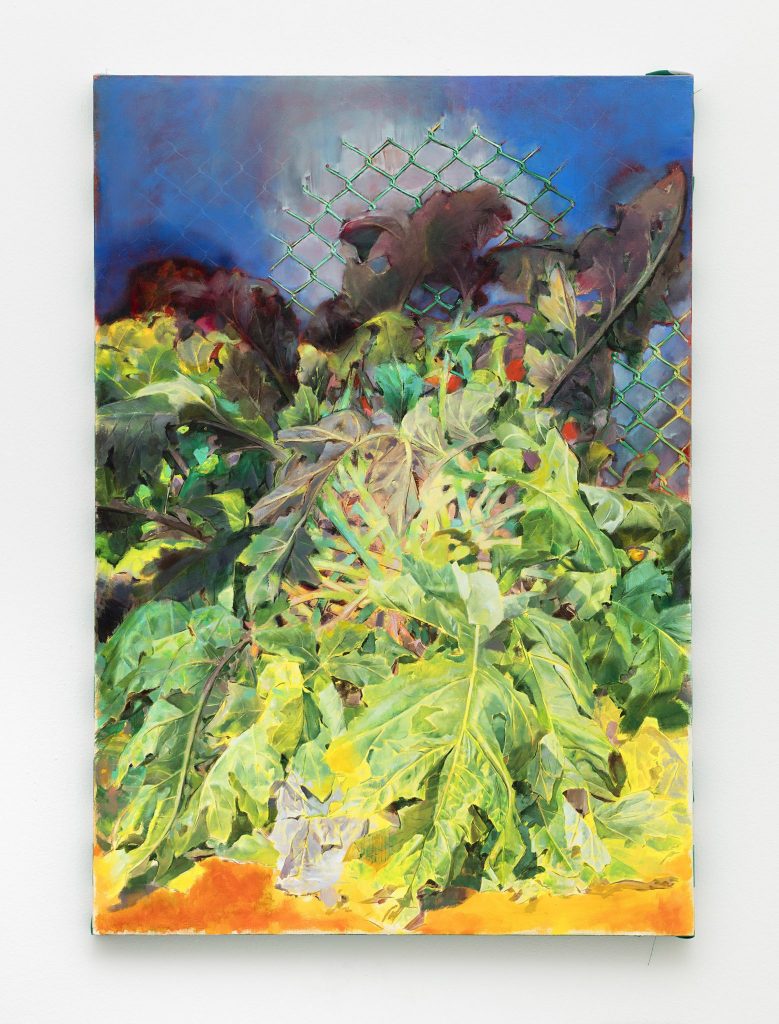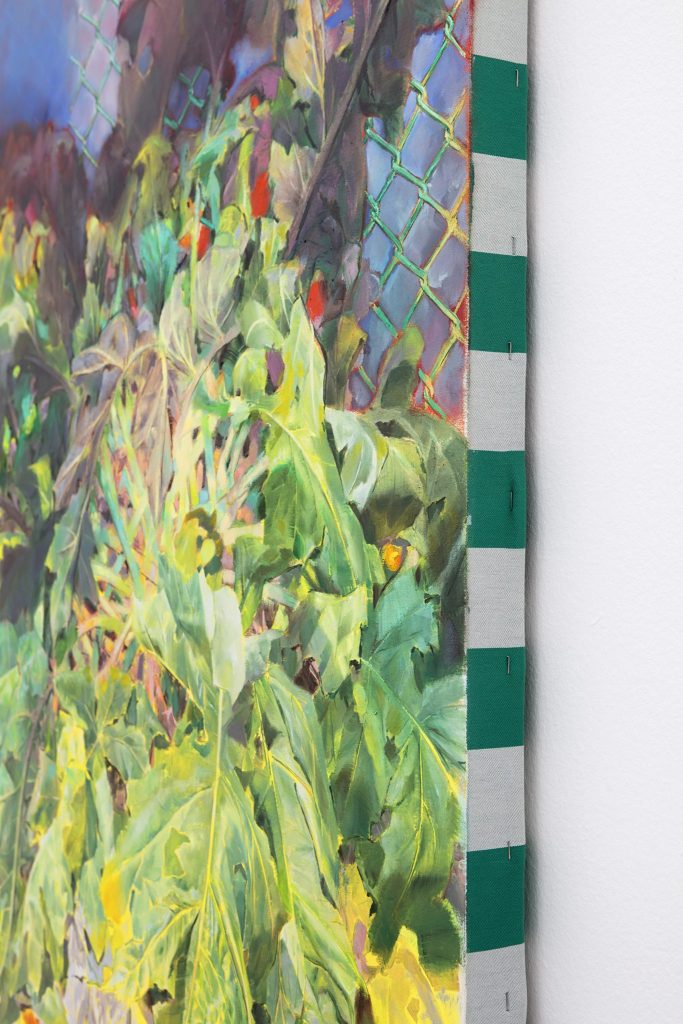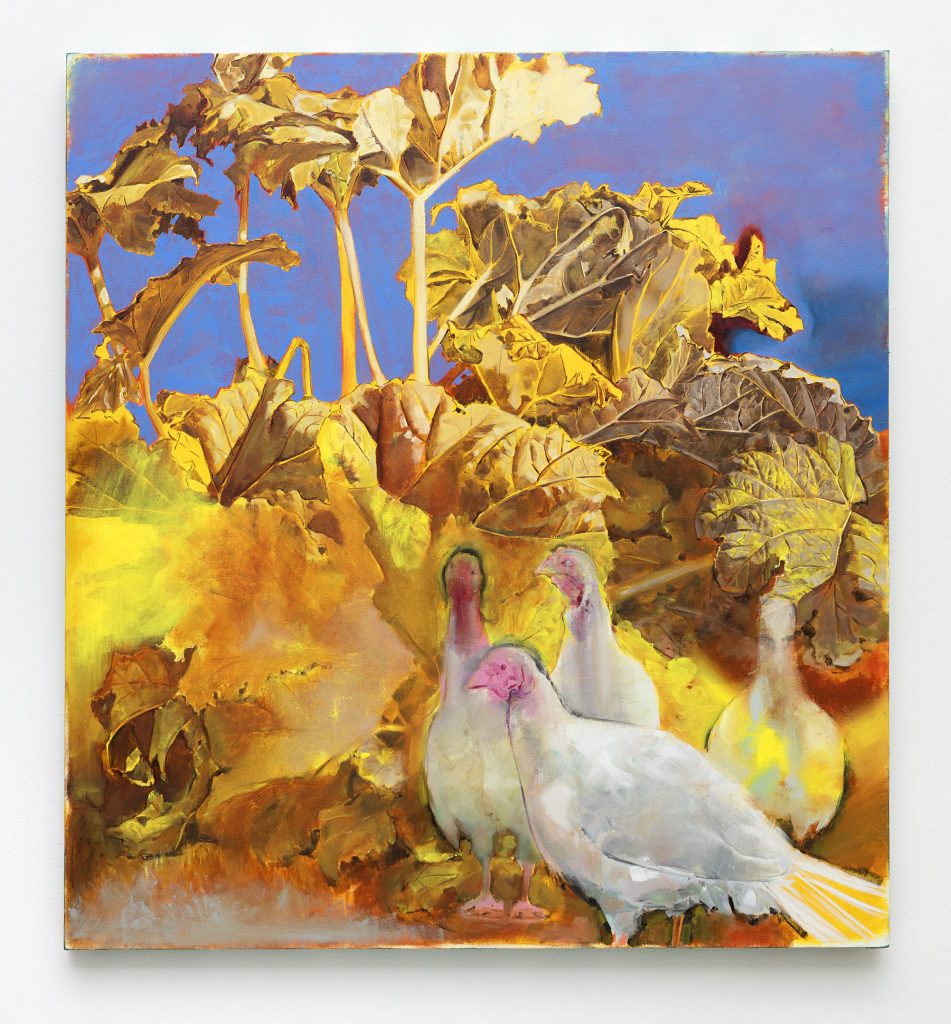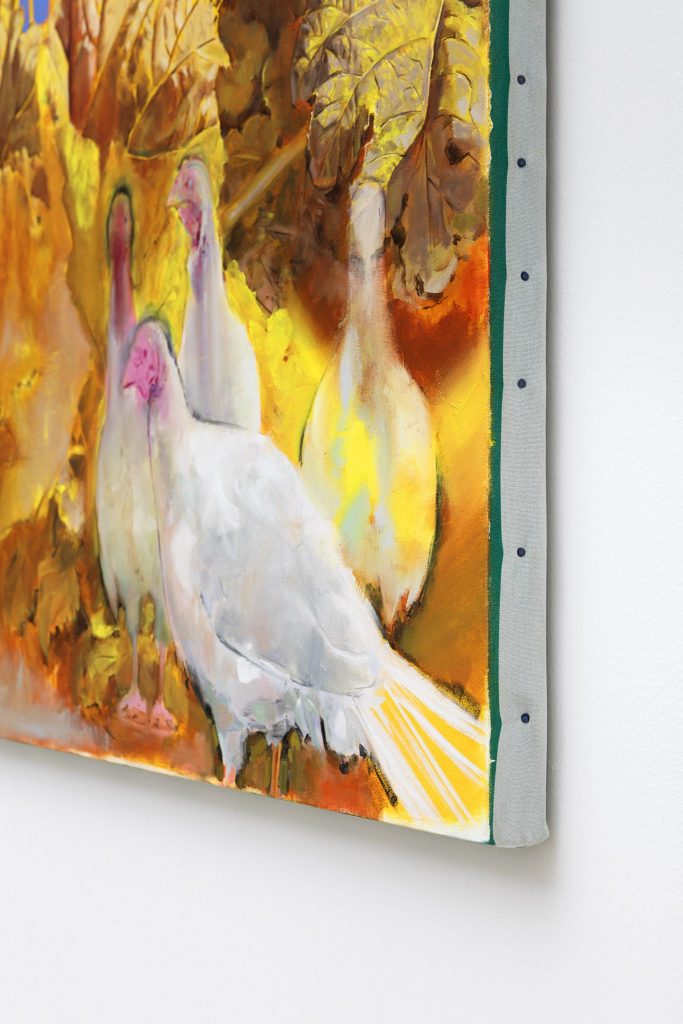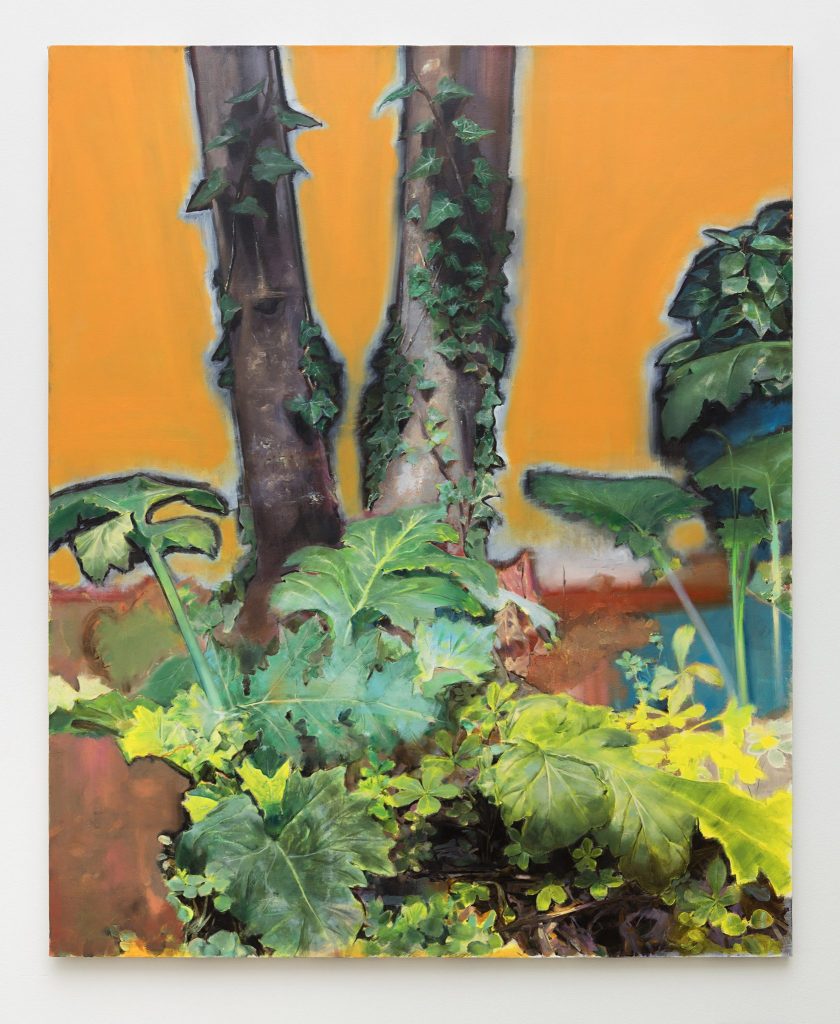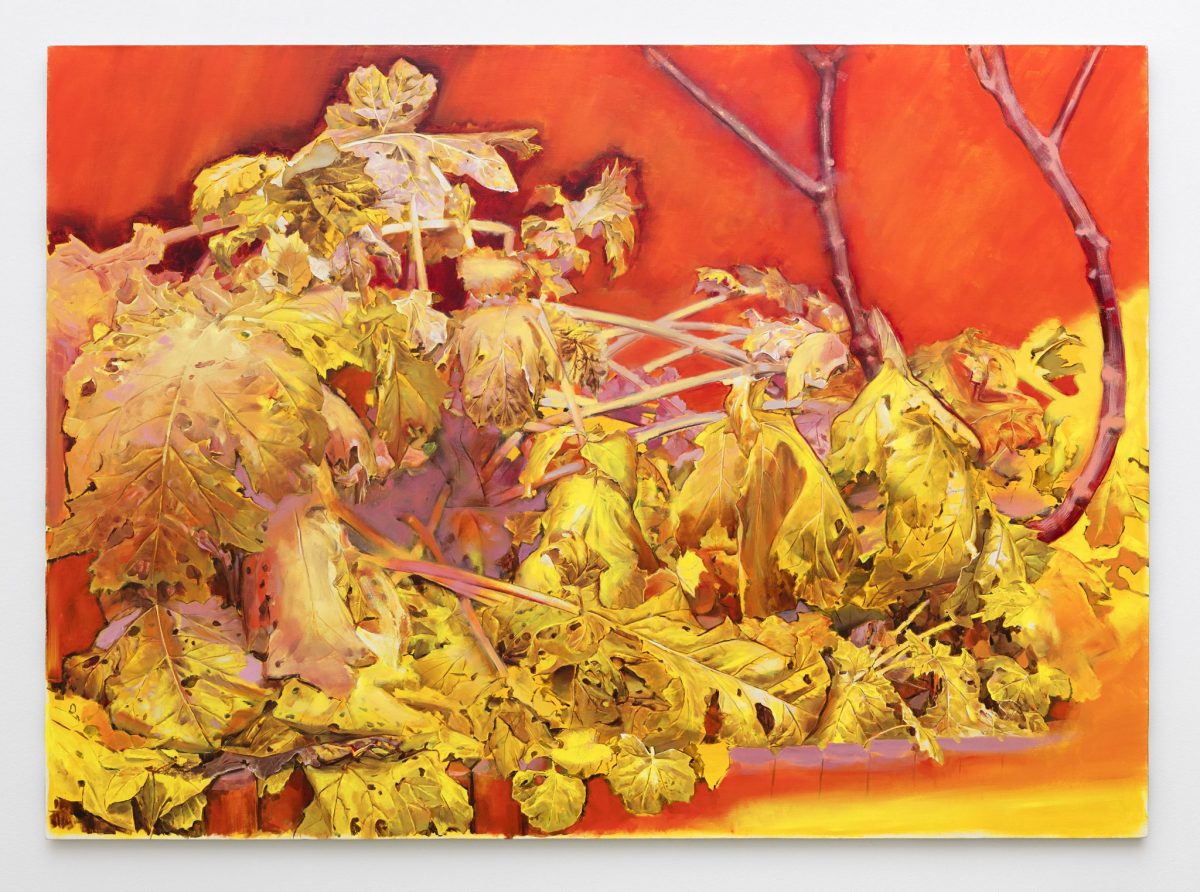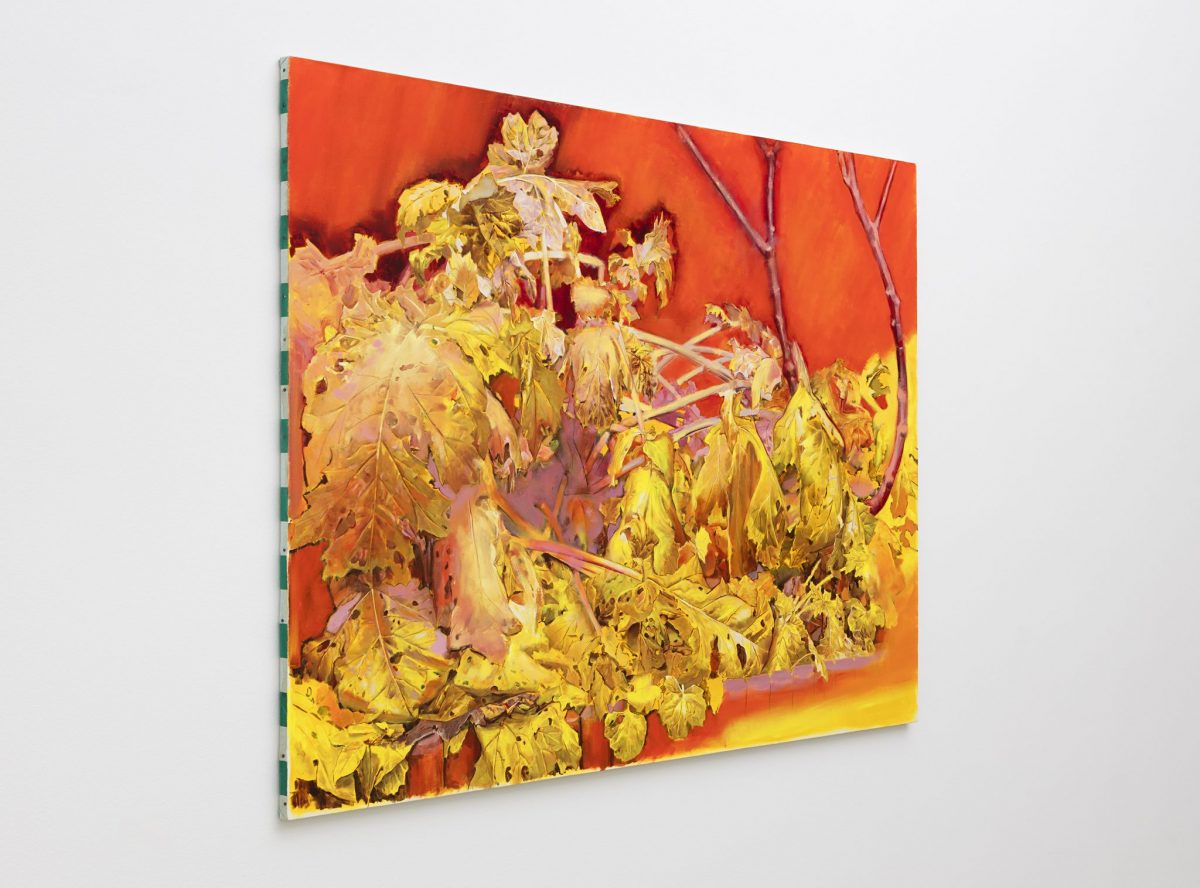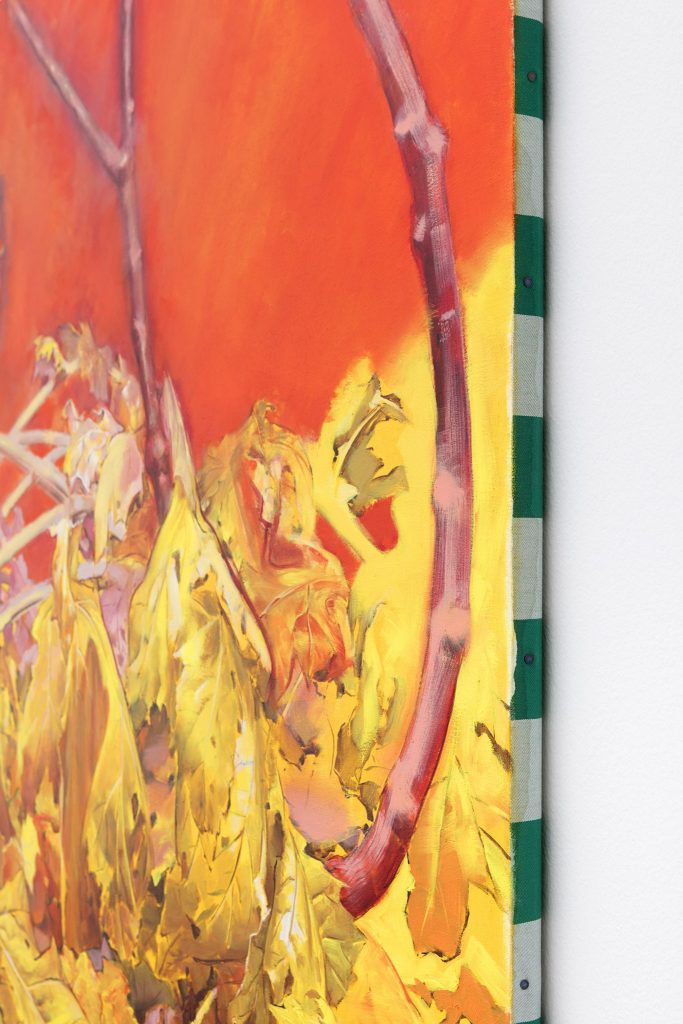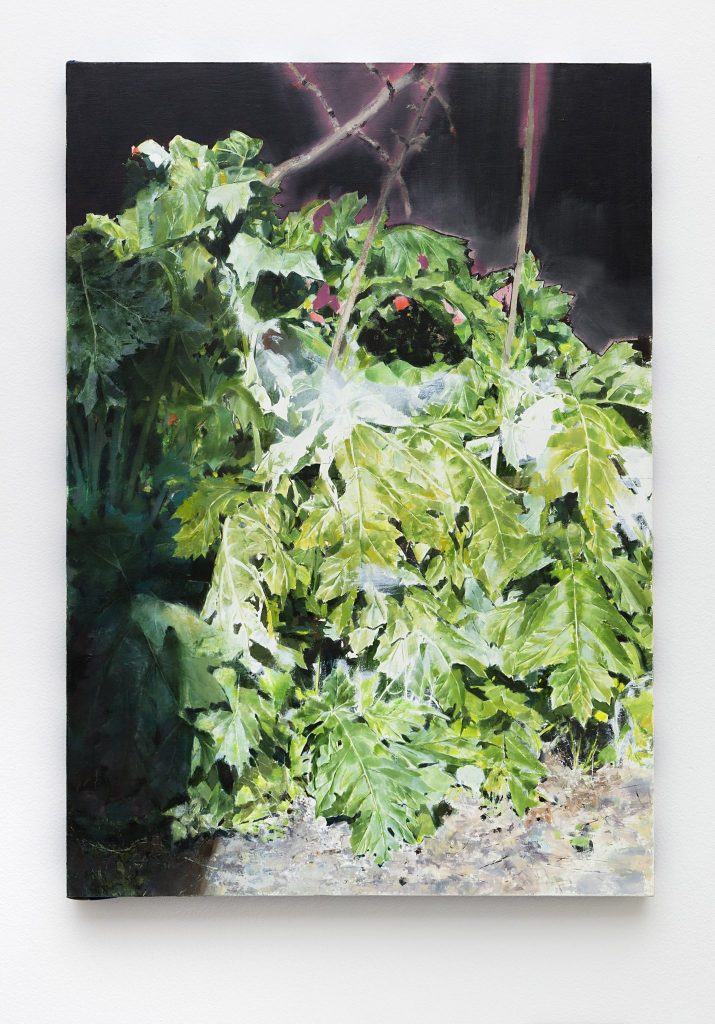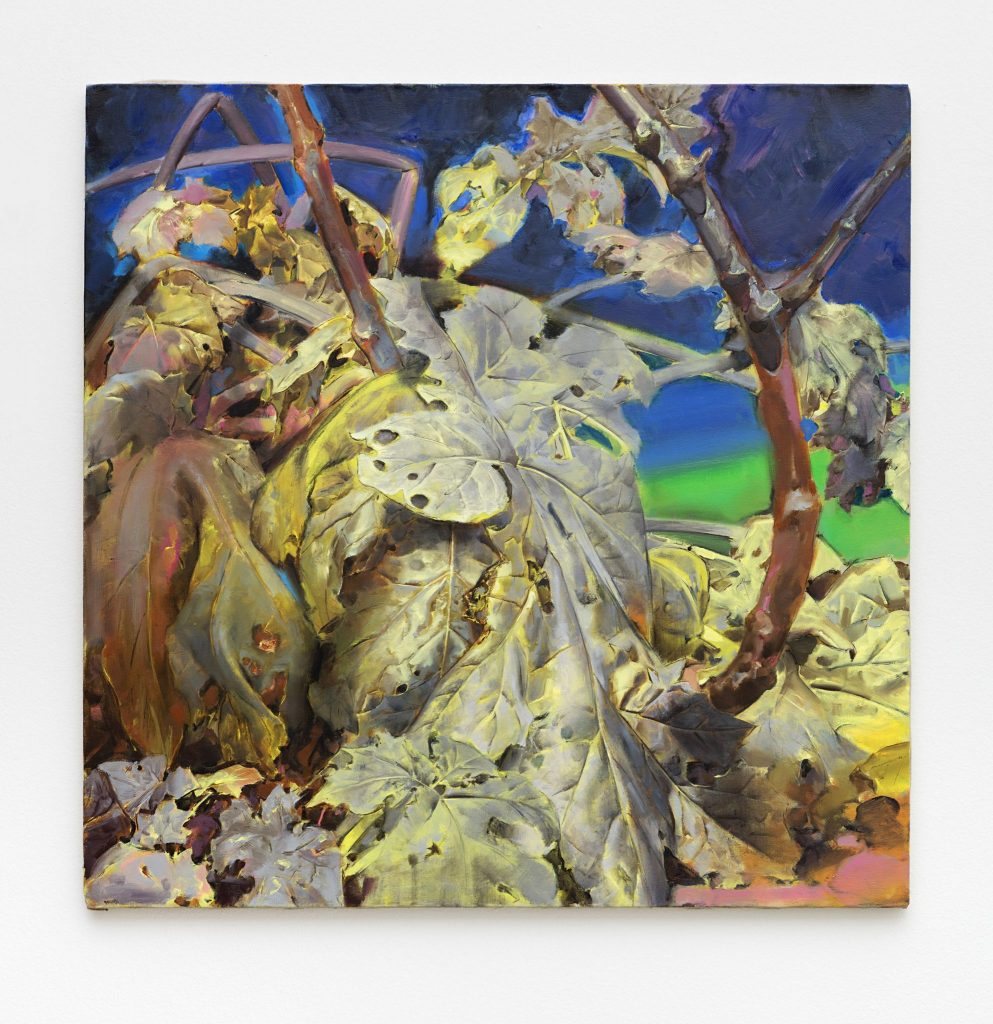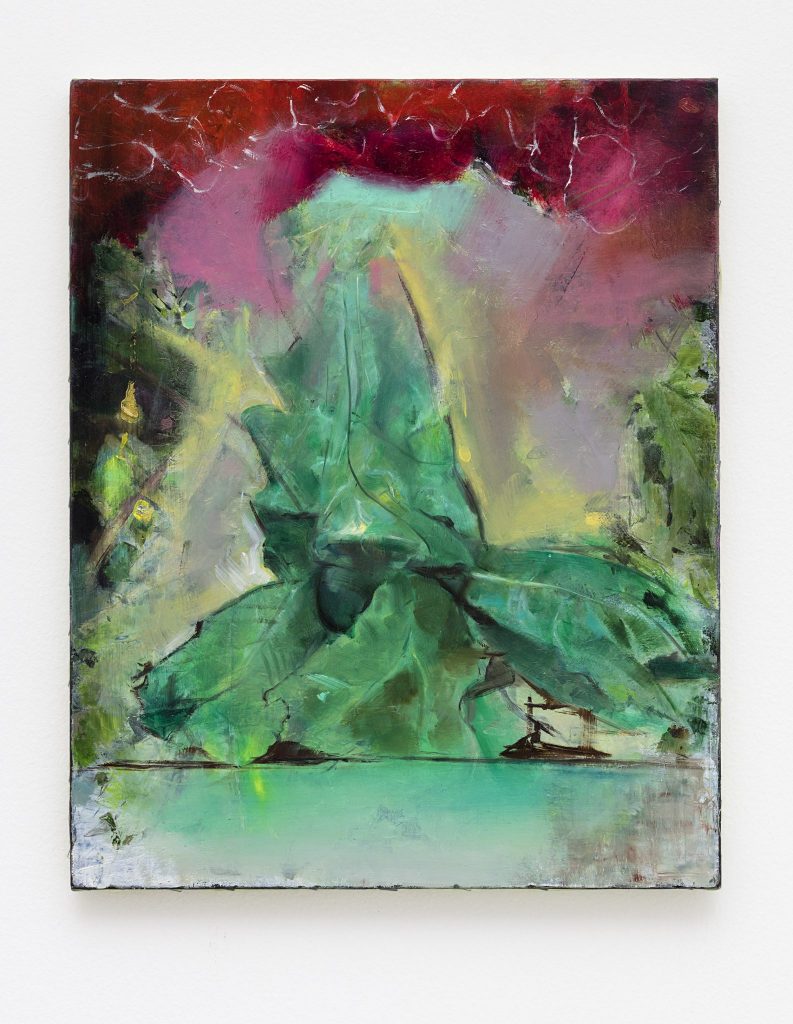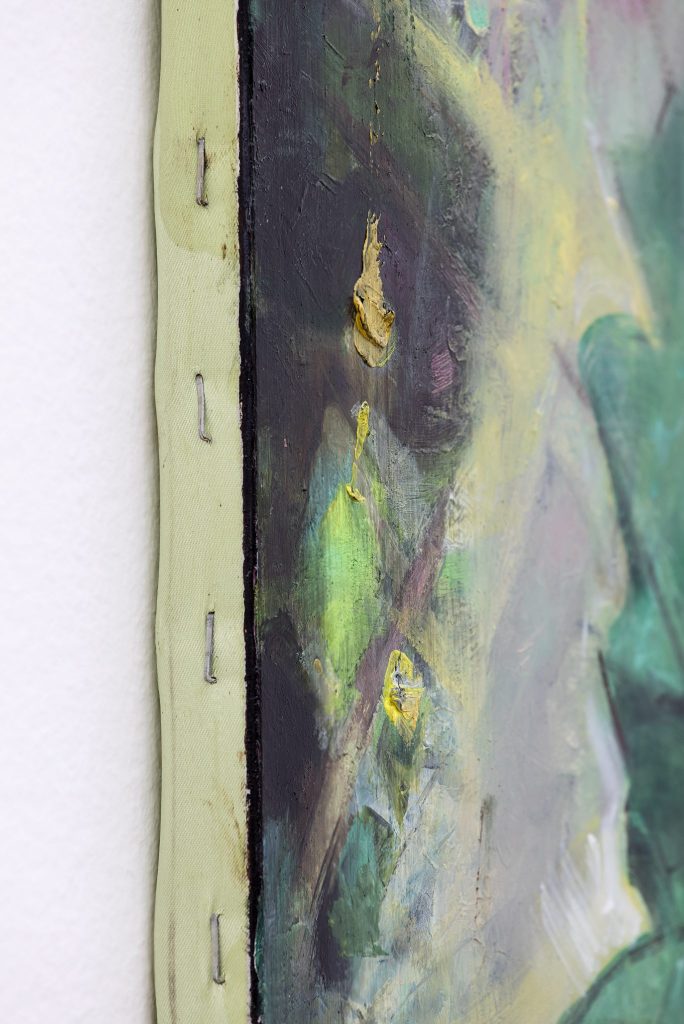
- This event has passed.
kaufmann repetto is pleased to announce Pierpaolo Campanini’s fourth solo exhibition with the gallery.
The subjects of the latest series of Campanini’s oil paintings are comprised mainly of plants, bushes and shrubbery, which inhabit the garden of the artist’s home and studio. Campanini’s deep and stratified paintings often fade in and of ground, creating moments of marked incompleteness and transitional gestures. The canvases are thus left to linger, suspended between representation and transfiguration. As an unexpected light invades the subjects, hardening each curvaceous fold of the organic against the vapid negative spaces in some works or the constructed geometrical supports in others, light and shadows blend generating a multitude of of colors. These colors navigate an expansive palette, imbued with an extremity and exaggeration by the human eye.
Campanini’s new body of work seems to predominantly arise from a reflection upon sight over the other senses. Here the hunger of the modern, Western man, is a “quest for a bright light that never ceases, he spares no pains to eradicate even the minutest shadow.”1
Pierpaolo Campanini’s research explores the inherent limits and possibilities of painting, flourishing in these fundamental dichotomies. It is impossible to portray light without tracing, simultaneously, a depiction of shadows.
Pierpaolo Campanini was born in Cento (Ferrara), where he lives and works. His recent exhibitions include A weed is a plant out of place, Lismore Castle, Ireland, curated by Allegra Pesenti (2016); Atelier Pozzati, Autostazione, Bologna, curated by Antonio Grulli (2016); Qui non si canta al mondo delle rane, Ex Mattatoio Matta, Museo delle Genti, Pescara, curated by Andrea Bruciati (2015); Uno più uno uguale tre, Museo Archeologico San Lorenzo, Cremona (2014); Visioni per un inventario, Fondazione Bevilacqua La Masa, Venice (2014); Faces, Onassis Cultural Centre, Athens, curated by Paolo Colombo (2012); Silences where things abandon themselves, MSU, Zagreb (2012); Italics: Italian art between tradition and revolution 1968-2008, curated by Francesco Bonami, Museum of Contemporary Art, Chicago and Palazzo Grassi, Venice (2009).
Contaci me
tra quelli a
cui è venuta
meno la
parola, per
troppa luce
This poem by Elisa Biagini states that this exhibition cannot be titled.
Count me in, in other words: include me among those who didn’t find the arguments and observe bewitched their own blindness.
For countless years already my work has led me to obsessively seek that exact spot, where the solar light is the most intense and where a group of acanthus plants seems to be part of the outpost of a determined resistance to such intensity. The plant of “laureate poets” (Montale), the exploding plant, scattering its own seeds through the burst of the floral capsules, has taken up residence in the courtyard under my windows, in the cracks of the wall plaster exactly where a summer sun shines and exhausts it.
In the daylight the plant draws and traces its own night. It melts and recreates its bonds.
What happens within her is what happens in sculpture: space breaks its faithful linearity; it gathers suddenly and fastens itself. We are giants and dwarfs.
This brings to mind ancient analogies, which consider the matters of the world as a reflection of those of the cosmos, which make of every plant a terrestrial star which looks at the sky and of every star a celestial plant pointing towards earth.
This constant magnetism between elements reinvents itself under my windows, between empty oil motor cans and plasticized metal nets which draw the mail of a hypothetical infinite, antique but also certainly comic…
Pierpaolo Campanini
kaufmann repetto è lieta di presentare la quarta mostra personale in galleria di Pierpaolo Campanini.
I soggetti della nuova serie di dipinti a olio sono per lo più piante, arbusti e cespugli che popolano il giardino della casa-studio dell’artista. La pittura profonda e stratificata di Campanini sfuma in zone di non finito, segnate dall’indeterminatezza, situando le tele in una zona intermedia tra figurazione e trasfigurazione.
Una luce improbabile inonda i soggetti e ne indurisce ogni piega, impastando luce e ombra. La semioscurità si traduce in una moltitudine di colori, a tratti impossibili e allucinati, come inventati da un occhio umano non adatto agli estremi.
Nel suo insieme, questo nuovo corpo di lavori sembra scaturire da una riflessione sul primato della vista sugli altri sensi e la conseguente ossessione per la luminosità radicati nella cultura occidentale moderna, che procede “inseguendo una chiarità che snida sin l’ultima particella d’ombra”.1
La ricerca di Pierpaolo Campanini esplora i limiti e le possibilità della pittura, nutrendosi di questa fondamentale dicotomia. Non è possibile descrivere la luce senza tracciare, contemporaneamente, un ritratto dell’ombra.
Pierpaolo Campanini è nato a Cento (Ferrara), dove vive e lavora. Le sue mostre recenti includono A weed is a plant out of place, Lismore Castle, Irlanda, a cura di Allegra Pesenti (2016); Atelier Pozzati, Autostazione, Bologna, a cura di Antonio Grulli (2016); Qui non si canta al mondo delle rane, Ex Mattatoio Matta, Museo delle Genti, Pescara, a cura di Andrea Bruciati (2015); Uno più uno uguale tre, Museo Archeologico San Lorenzo, Cremona (2014); Visioni per un inventario, Fondazione Bevilacqua La Masa, Venezia (2014); Faces, Onassis Cultural Centre, Atene, a cura di Paolo Colombo (2012); Silences where things abandon themselves, MSU, Zagabria (2012); Italics: Italian art between tradition and revolution 1968-2008, a cura di Francesco Bonami, Museum of Contemporary Art, Chicago e Palazzo Grassi, Venezia (2009).
Contaci me
tra quelli a
cui è venuta
meno la
parola, per
troppa luce
La poesia di Elisa Biagini1 dice che questa mostra non può avere un titolo.
Contaci me, ovvero: mettimi tra coloro a cui sono venuti meno gli argomenti e osservano incantati il proprio accecamento. Da anni ormai il lavoro mi ha portato a cercare ossessivamente proprio lì dove la luce solare batte più fortemente e dove un gruppo di piante di acanto sembra costituire l’avamposto di una resistenza tenace a tanta intensità.
La pianta dei poeti laureati (Montale), la pianta che esplode, spargendo i propri semi attraverso lo scoppio delle capsule floreali, ha preso dimora nel cortile sotto le mie finestre, tra le crepe dell’intonaco e proprio dove batte un sole che d’estate la strema. Nella luce meridiana la pianta disegna e ritaglia la propria notte. Scioglie e ricompone i propri nodi.
Accade in lei ciò che avviene in scultura: lo spazio rompe la sua linearità laica, si addensa improvvisamente e si avvita. Siamo giganti e nani.
Tornano alla memoria antiche analogie che pensano le cose del mondo come specchio di quelle del cosmo, che fanno di ogni pianta una stella terrestre che guarda il cielo e di ogni stella un’erba celeste orientata in direzione della terra. Questo magnetismo incessante tra gli elementi si rinnova sotto le mie finestre, tra lattine vuote di olio per motori e reti metalliche plastificate che disegnano le maglie di un ipotetico infinito, antico ma anche decisamente comico…
Pierpaolo Campanini
_________
1 Jun’ichiro Tanizaki, in praise of shadows, let’s island books, stony creek, 1977. first edition published in 1933.

